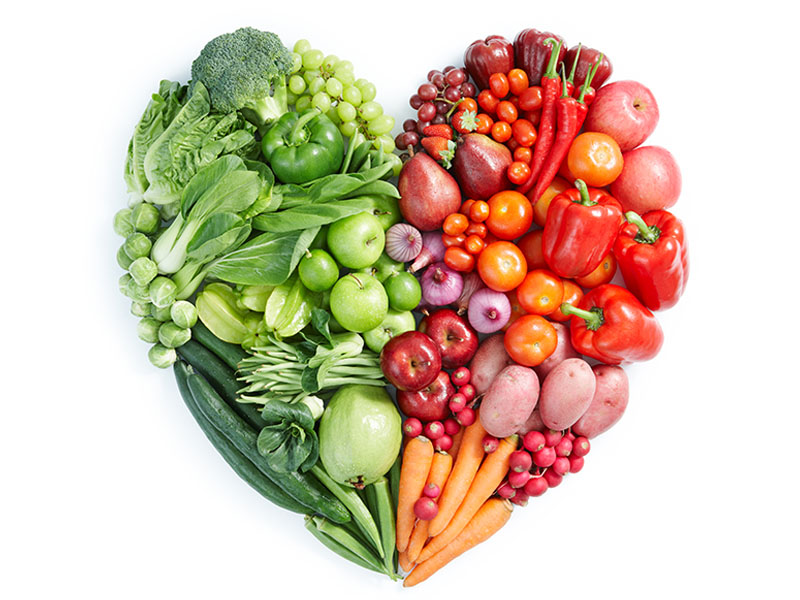We know how vital veggies are to our families’ health, whether we like them or not. But not all vegetables are created equal. Each one has a unique combination of nutrients and benefits – some are particularly powerhouse sources of nutrition.
If you or your kids aren’t vegetable fans, that’s all the more reason to try a wider variety. There are bound to be a couple of veggies your family will dig if they’re prepared just right. If those vegetables happen to be some of these all-stars, that’s even better.
1. Butternut squash
This winter squash is loaded with vitamin A, in fact, four times the recommended daily allowance (RDA). It also contains double the RDA of vitamin C and packs more potassium than a banana. To turn your family into butternut squash fans, first, cut a squash in half and remove all the seeds. Then fill a glass baking dish about 3/4″ high with water, place the pieces of squash with the skin facing up and bake at 400 degrees for one hour. Allow the squash to cool enough to handle it, then scoop all the squash out of the peel and top it with butter. If that doesn’t suffice, try adding a touch of brown sugar.
2. Kale
This dark green leaf packs a whopping 684% of the RDA of vitamin K, and well over the RDA of both vitamins A and B6. If your family likes salad, add a mix of kale to the lettuce. If you’re not salad eaters, kale makes a great addition to smoothies.
3. Sweet potatoes
Vitamins A, B5 and B6, riboflavin, thiamin, niacin and carotenoids are their nutritional makeup. The good news is, Thanksgiving isn’t the only time of year you can eat them. Sweet potatoes make yummy french fries, which can even be baked rather than fried. Just look for one of oodles of baked sweet potato fry recipes out there.
4. Peas
These contain a long list of nutrients. Of particular note, peas are very high in vitamins B1, C and K, manganese, copper, phosphorus and folate. Fortunately, peas are one vegetable most kids and adults will eat. Add peas to a variety of soups, stews and casseroles. Another tasty option is to add them to macaroni and cheese.
5. Bell peppers
Red, orange, yellow or green bell peppers are nutritious whatever the color. All are high in vitamin C, with red bell peppers containing 169% of the RDA. Also, bell peppers are high in vitamin A and carry a good dose of other nutrients as well. Do your kids live by the motto, “everything tastes better with ranch”? If so, try bell pepper slices for dipping. Bell peppers are also great on pizza and sauteed to top hot sandwiches.
6. Brussels sprouts
This veggie is noted for its vitamins K and C. But Brussels sprouts provide numerous other nutrients in decent amounts as well. Still, you may be wondering how to get your kids to acquire a taste for Brussels sprouts. If they’re not big vegetable eaters, it may be a challenge. Try what one mom, Monica Kass Rogers, did as she revealed in, “How I Got My Kid to Eat Brussels Sprouts.” Cut them in half, then stir-fry them in sesame oil with other vegetables. Another trick she recommends is to roast them with olive oil and salt. If kids can learn to love them, so can you.
7. Asparagus
Folic acid is what asparagus is especially noted for, because it contains 60% of the RDA. But asparagus also includes a healthy amount of vitamins K and C, as well as several other essential nutrients. Grilled asparagus is a tasty side. Before grilling, brush the asparagus lightly with olive oil and add salt and pepper. Place the spears on the grill for 10 minutes, turn them, then give them a few more minutes until they’re lightly blackened.
8. Spinach
Now here’s an impressive number. Spinach contains 987% of the RDA of vitamin K. Spinach is also an excellent source of vitamin A, manganese, folate, magnesium, iron, copper and several other nutrients. You can add spinach to both smoothies and pizza. Spinach quiche and spinach pie are also dishes many kids love.
9. Broccoli
Here’s another vegetable that’s a rich source of vitamin K, packing 245% of the RDA. Broccoli also exceeds the RDA for vitamin C and is an excellent source of chromium, folate and fiber. Mix broccoli into most any cheesy dish, and it’s easy to gobble up. Broccoli cheese soup, broccoli smothered in cheese and other cheesy pasta dishes with broccoli added are good options.
10. Avocado (The fruit that can pass as a vegetable)
Although not a powerhouse of any particular vitamin or mineral, avocado still carries an adequate amount. But particularly notable is that avocado is an excellent source of polyunsaturated and monounsaturated fats, which are the healthy fats, so it’s an excellent replacement for unhealthy fats. Guacamole is an all-time favorite. Avocado is also yummy mixed with egg salad or a tossed salad.
11. Pumpkin (canned)
This is an outstanding source of vitamin A, containing 2½ times the RDA, not to mention a fair amount of a host of other vitamins and minerals. Numerous desserts can be made from pumpkin. So the next time you’re in the mood to bake, make something with a little added nutritional value. Try making pumpkin pie, bread, cookies or cheesecake.
12. Scallions
Also known as spring onions or green onions, these pack 172% of the RDA of vitamin K. They’re also known for their antioxidants and are a good source of vitamin A. Scallions can be grilled just like asparagus. Brush them with oil, add salt and pepper, then toss them on the grill until they’re lightly browned. If that doesn’t work for your kids, try wrapping them in bacon.

